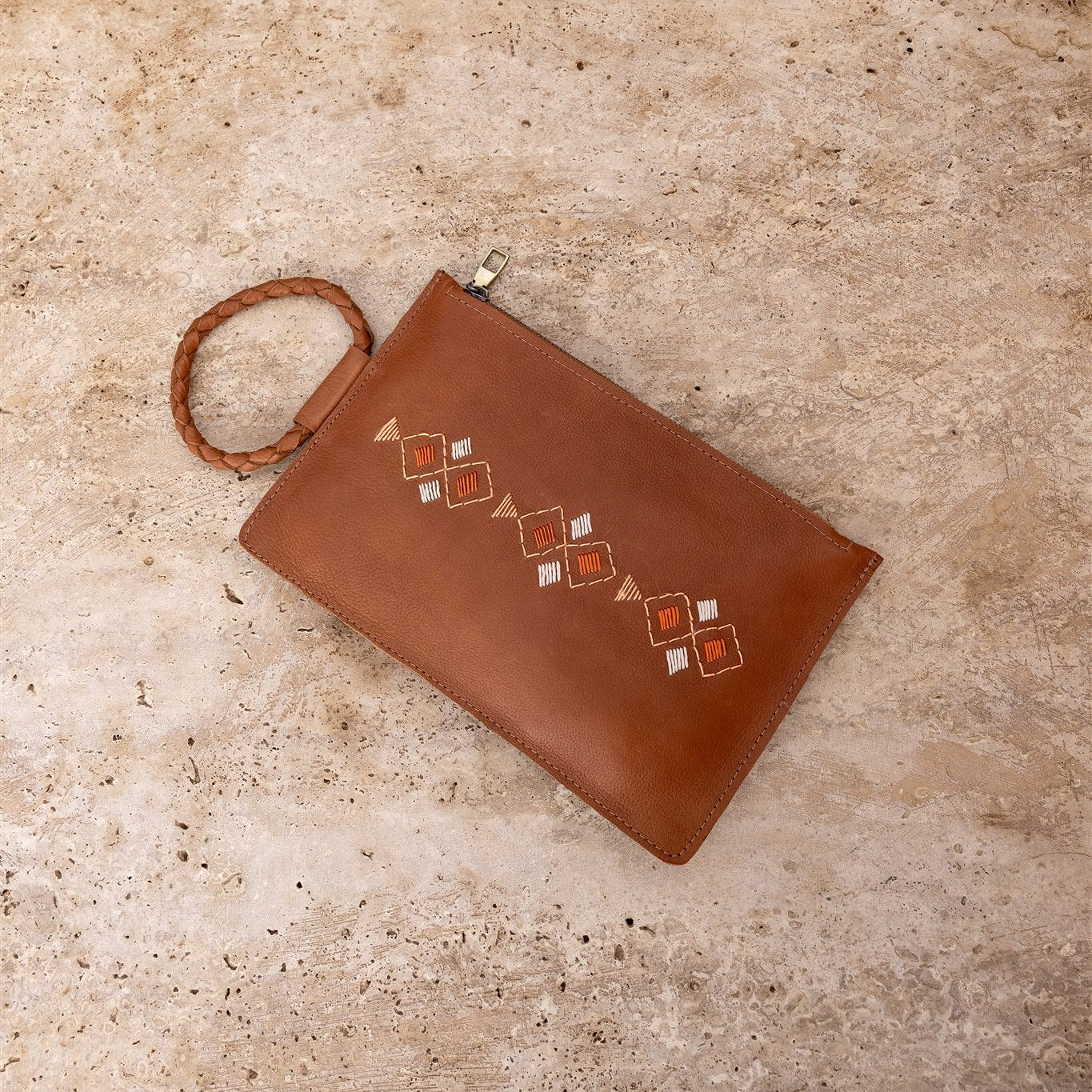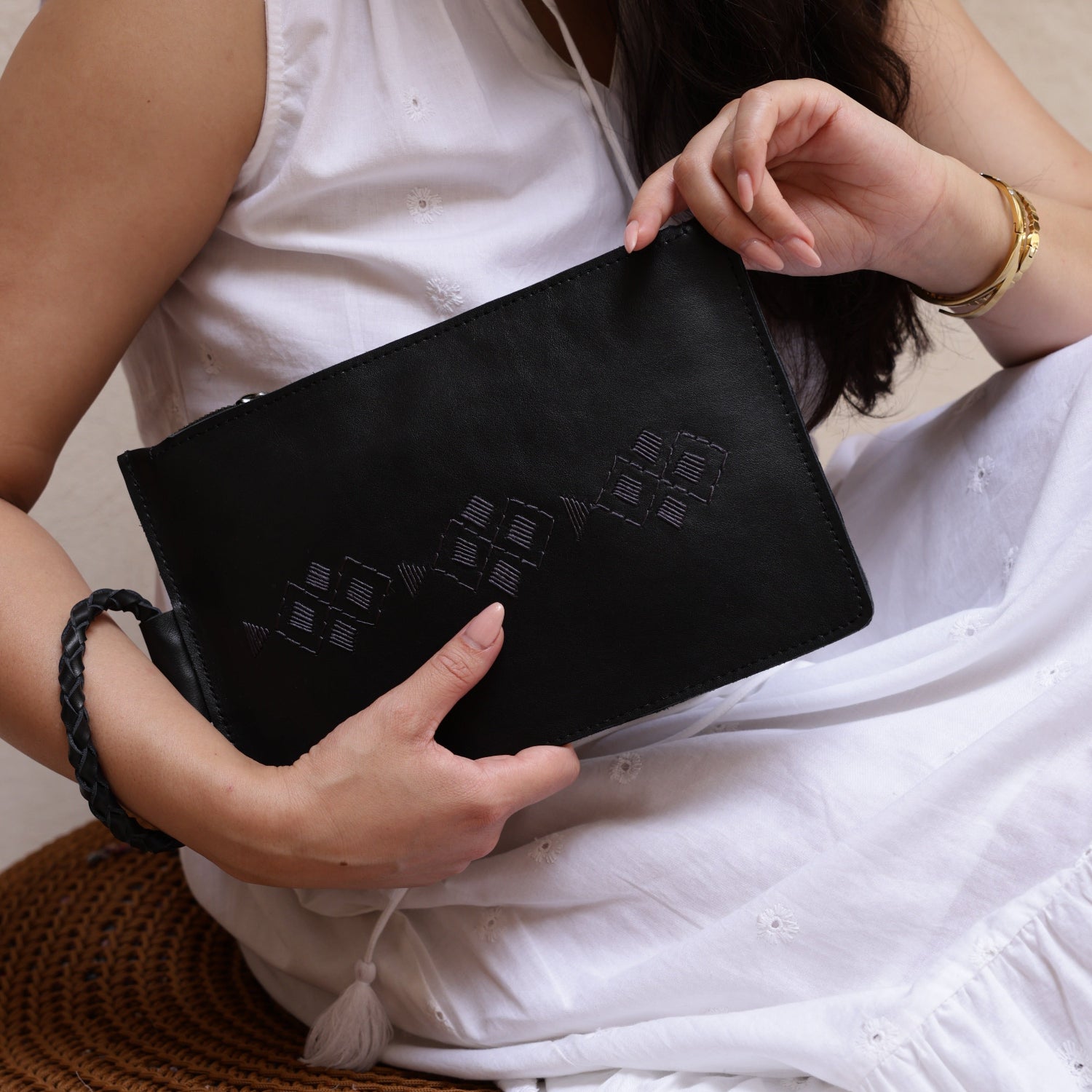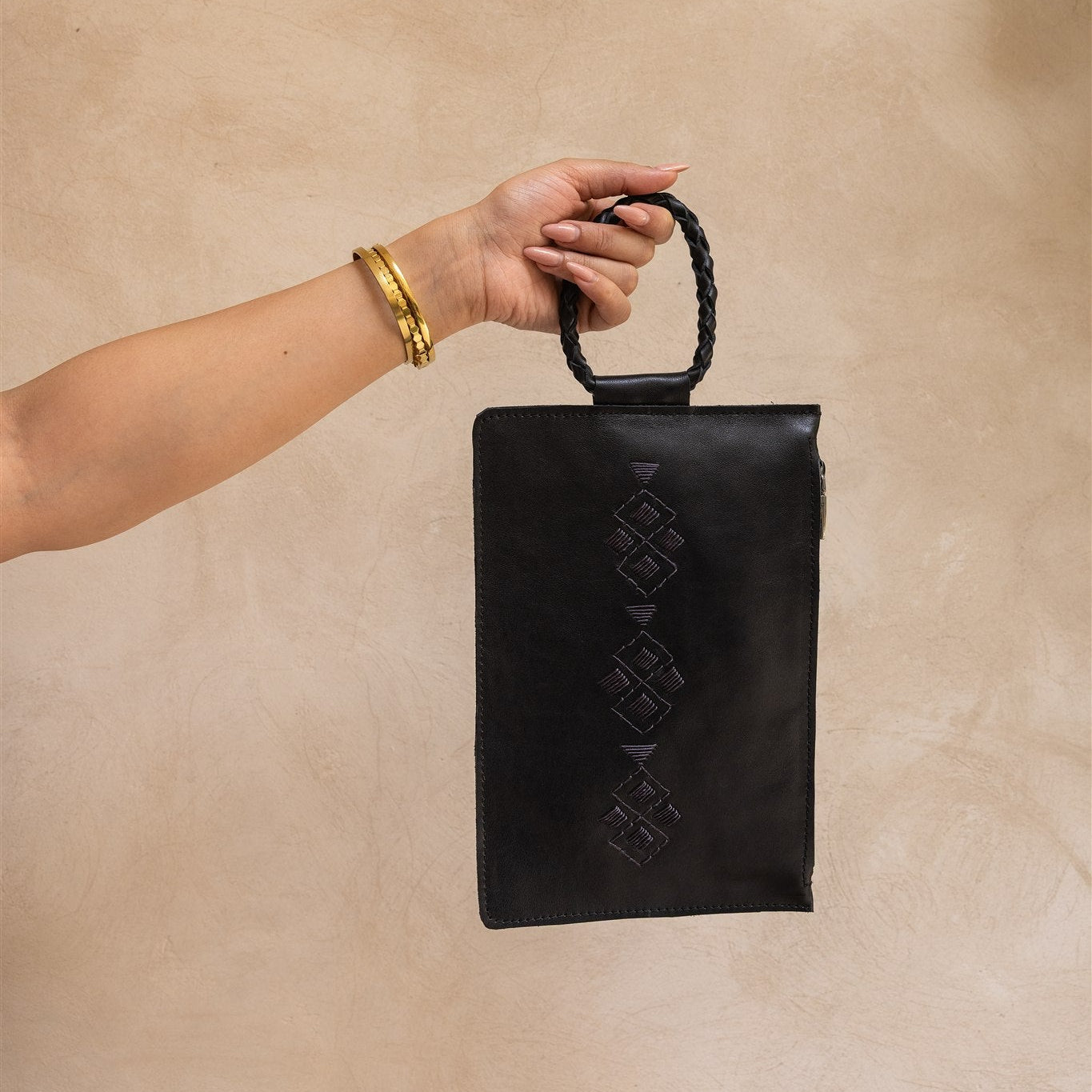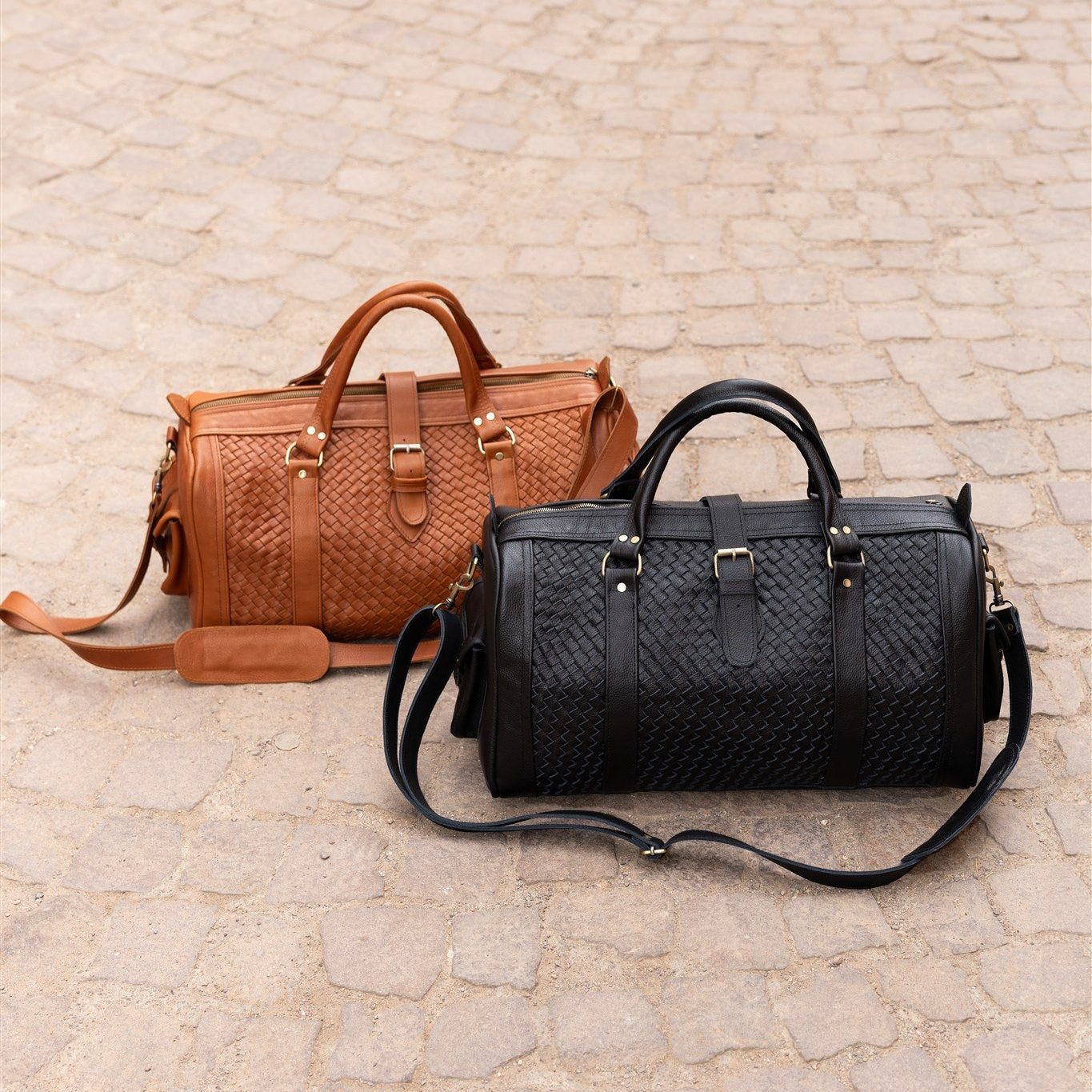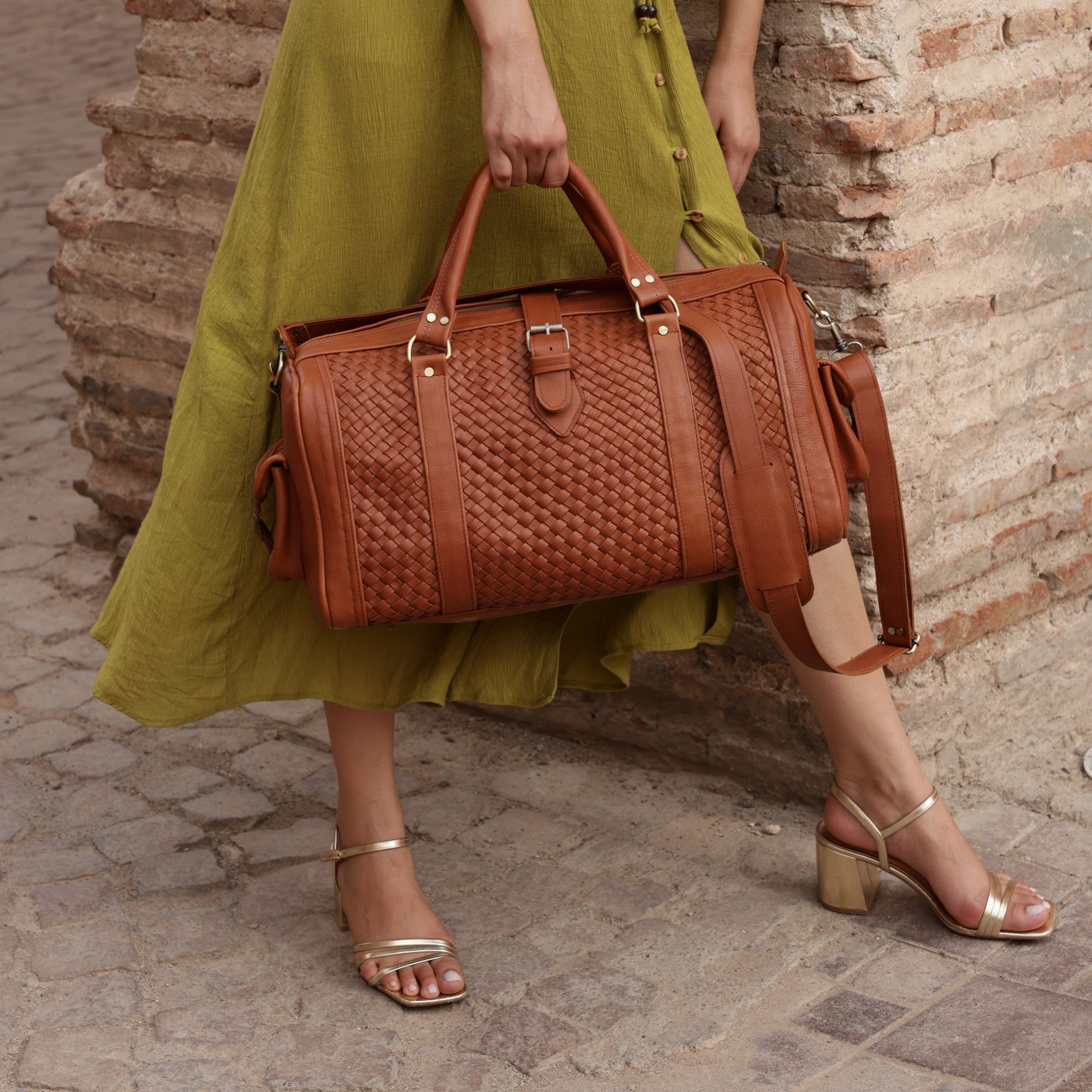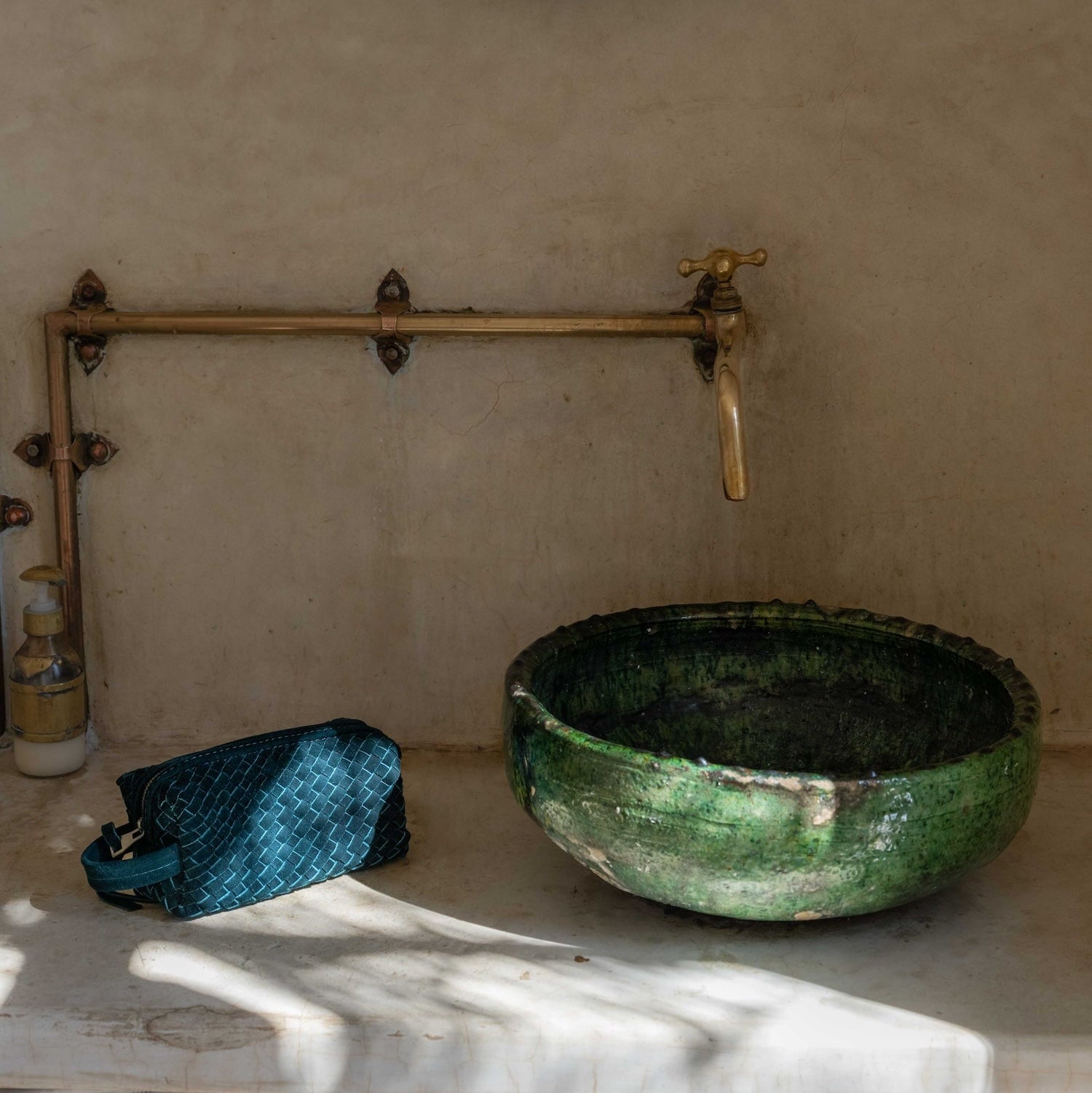When I first traveled to Morocco, I was captivated by the craftsmanship that surrounded me. The art of embroidered leather is one of Morocco’s most stunning traditions, blending generations of skill, storytelling, and artistic detail. It’s been an incredible journey learning about this craft, and I’m excited to share what I’ve discovered with you.

A Tradition with Deep Roots
Embroidered leather has been a part of Moroccan culture for centuries. At AMASOUK, we partner with artisans who learned this craft from their parents and grandparents, carrying forward techniques that have remained largely unchanged over time. The cities of Fez and Marrakech, known for their deep history in leatherwork, have been the heart of this tradition, where artisans stitch elaborate patterns onto leather.
The leather itself is a cornerstone of Moroccan craftsmanship. Walking through the tanneries, I was fascinated by the centuries-old process still used today—natural dyes, saffron-infused water, and traditional tanning pits where hides are softened by hand. Once the leather is perfected, it becomes the base for embroidery, an art form that transforms function into beauty.

The Embroidery Process
Every embroidered leather piece is a testament to patience, skill, and heritage. Here’s how these stunning works of art come to life:
1. Tanning the Leather: It all starts with the leather. Artisans use vegetable tanning techniques, soaking the hides in natural solutions like crushed bark and saffron to achieve their deep, rich tones. The Chouara tannery in Fez, which I visited on one of my first trips to Morocco, is one of the oldest in the world and still operates using these ancient methods.
2. Cutting and Preparing the Leather: Once the leather is tanned and dried, artisans carefully cut it into the desired shape, whether it’s for a bag, pouf, or pillow.
3. Creating the Template: Before the embroidery begins, a pattern must be created. Artisans create a template using a piece of cardboard and string, meticulously outlining the design. This template is then stamped onto the leather, leaving behind a faint guide that ensures the embroidery follows a precise and uniform pattern.
4. Hand-Embroidering the Designs: Using silk, wool, or cotton thread, the embroiderer begins stitching along the stamped outline. The designs range from geometric patterns inspired by Islamic art to floral motifs and traditional amazing symbols. Watching this process firsthand, I was amazed by the level of concentration and skill it requires. Every stitch must be perfectly placed to maintain the balance of the design.
5. Assembling the Final Piece: Once the embroidery is complete, the leather is stitched together to create a bag or pouf.
A Living Craft
Even with the rise of mass production, this craft remains alive thanks to the artisans who continue to create each piece by hand. At AMASOUK, we’ve had the honor of collaborating with skilled artisans dedicated to preserving this heritage. Many work in cooperatives that focus on training the next generation, ensuring these skills don’t fade away with time.

Bringing a Piece of Morocco Home
What I love most about embroidered leather is that it tells a story—a story of Morocco’s rich culture, of artistry passed down through families, and of the incredible hands that bring these pieces to life. Whether it’s a hand-stitched clutch, a decorative pouf, or a timeless belt, each item reflects the passion and skill of the artisans behind it.
At AMASOUK, we celebrate and support these traditions by working directly with artisans to bring you pieces that honor Morocco’s heritage while fitting seamlessly into your everyday life. I invite you to explore our collection and experience the magic of Moroccan embroidery for yourself. Every stitch carries a piece of history, and I’m so grateful to share it with you.




